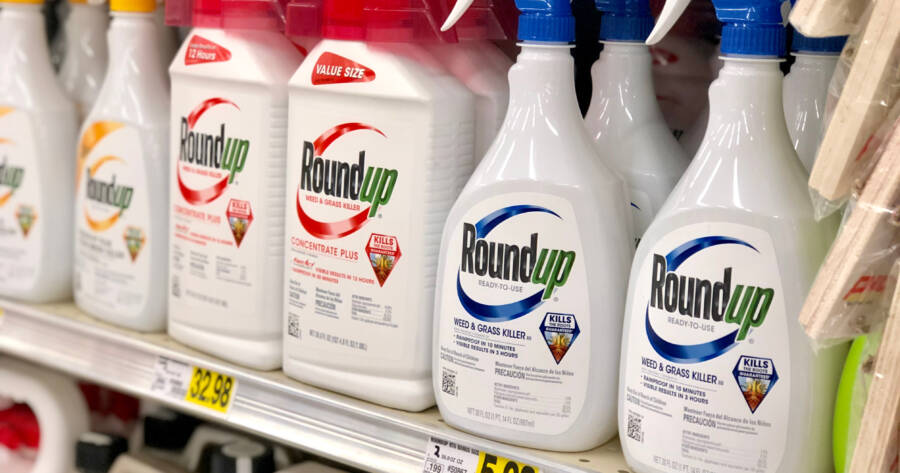The Monsanto Roundup class action lawsuit has been filed on behalf of Canadian and American consumers. The lawsuit was filed when it was discovered that Roundup contains glyphosate, a chemical that is associated with non-Hodgkin’s lymphoma. Perform a search online to find out if you’re owed money!
The Claim: Monsanto’s Roundup Contains Cancer-Causing Chemicals
Claimants in the Monsanto Roundup class action lawsuit are suing the defendant on the basis that the weed and grass killer product it sold contains cancer-causing chemicals — a fact that wasn’t disclosed at the time of sale. Claimants were exposed to this herbicide. As a result, they may have developed non-Hodgkin’s lymphoma, a cancer of the lymph nodes that’s often incurable.
The lawsuit alleges that the defendant didn’t adequately warn consumers about the risks of using Roundup. That error led to hundreds of thousands of claimants developing life-threatening diseases.
The Defendant: The Monsanto Company
The defendant is the Monsanto Company. They are an American biotech corporation headquartered in Missouri. It was purchased by Bayer in 2018. Roundup is Monsanto’s best-known product.
Monsanto has a long history of producing products that are swimming in controversy. It was involved in the Agent Orange lawsuits in the 1960s. Today, it’s facing multiple lawsuits and court action as a result of producing Roundup, an herbicide containing potentially deadly chemicals that have been thought to cause non-Hodgkin’s lymphoma with repeated exposure.
The Product: About Roundup and Glyphosate
Roundup is the brand name for a broad-spectrum herbicide that contains glyphosate — the chemical in question in this lawsuit. Glyphosate works by inhibiting an enzyme that’s essential to plant growth. It disrupts the normal function of plants and microorganisms and prohibits the growth of undesired weeds.
It’s commonly used in agricultural and nonagricultural applications. For example, it’s frequently used on public lands and parks to manage weeds. It’s also used on residential and commercial properties to control weeds on lawns, along walkways or driveways, and around buildings.
Get Involved: Who Can Join the Roundup Class Action?
Anyone in the United States who purchased Roundup between 2001 and 2022, and who developed non-Hodgkin’s lymphoma afterwards, use can join the class action. The most common type of non-Hodgkin’s lymphoma, B-cell lymphoma, is associated with chronic exposure to glyphosate.
You may be entitled to compensation if you’ve been diagnosed with this form of cancer after exposure to Roundup. Additionally, you may be eligible to make a claim if someone you love developed non-Hodgkin’s lymphoma after Roundup exposure and later died.
The Details: Why Is There a Class Action?
There are a couple of reasons for this lawsuit. The first is that Roundup contains glyphosate. The second reason is that Monsanto failed to disclose this hazardous ingredient. Their decisions led to thousands of consumers being unaware of the risks.
Since consumers weren’t made aware of the risks associated with Roundup, they weren’t able to take protective measures. They could have chosen decreased use or personal protective equipment, precautions weren’t typically taken by those who used the product. As a result, some fell victim to the dangers of this harmful chemical product.
Taking Action: How to File a Claim
The original deadline to file a claim against Monsanto passed in June 2020. However, lawsuits continue against the Roundup manufacturer and its parent company Bayer. As trials and judgments against the pharmaceutical and biotechnology giant come to an end, additional funds may become available to claimants.
As of November 2022, Monsanto has already paid out more than $11 billion to approximately 100,000 claimants. If you or someone you know has developed non-Hodgkin’s lymphoma after prolonged exposure to Roundup products, consult an attorney to learn more about your options or how to file a claim.
How Do Class Action Lawsuits Work?
In a class action lawsuit, claimants (or plaintiffs) join forces in one single lawsuit, rather than fight individually. These individuals have suffered similar harm as a result of a negligent product or irresponsible business practice. They file their lawsuit together to sue en masse.
In these cases, a team of attorneys is appointed to work on the case. Each individual class member may also have their own lawyer, usually a member of the lead counsel’s team. However, they often simply file their claim directly with one attorney who later distributes settlements accordingly.








